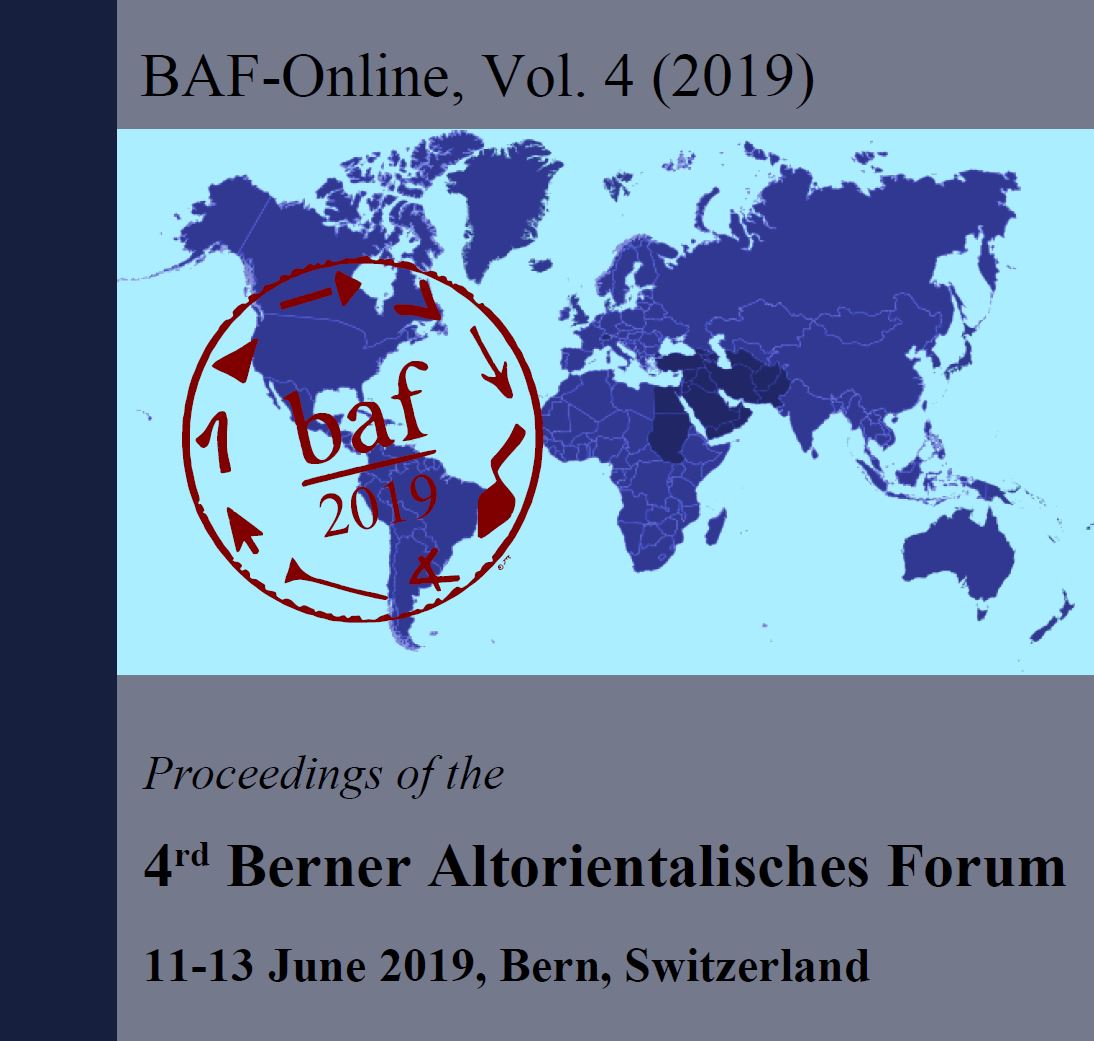Is the Erasing of the Metal Ware in the Banquet Scene of Assurbanipal, an Aspect of the damnatio memoriae?
DOI:
https://doi.org/10.22012/baf.2019.15Abstract
When one speaks about the damnatio memoriae, examples from classical time comes immediately to mind, but that phenomenon was not rare in the civilisations of the ancient Near East. Because of its master piece statute and its popularity, the Banquet Scene of Assurbanipal (645-635 BCE) is often quoted as a typical example of damnatio memoriae in the Near East. Indeed, the faces of the king and of the queen were mutilated after the fall of the Assyrian Empire, but a close look to the relief shows that the bowl engraved in the hand of Assurbanipal was also intentionally erased. Has that no specific meaning, or just coincidental? The aim of this paper is to answer those interrogations. To do so, we will study, through an analysis of the iconographic, archaeological and written sources, the symbolic meaning of the ware used during banquets. The objective is to see if luxury recipients could have had such a strong association with the royal figure that they could have been considered as a symbol of kingship and if erasing them could have contributed to the damnatio memoriae.
Published
Issue
Section
License

This work is licensed under a Creative Commons Attribution 4.0 International License.



